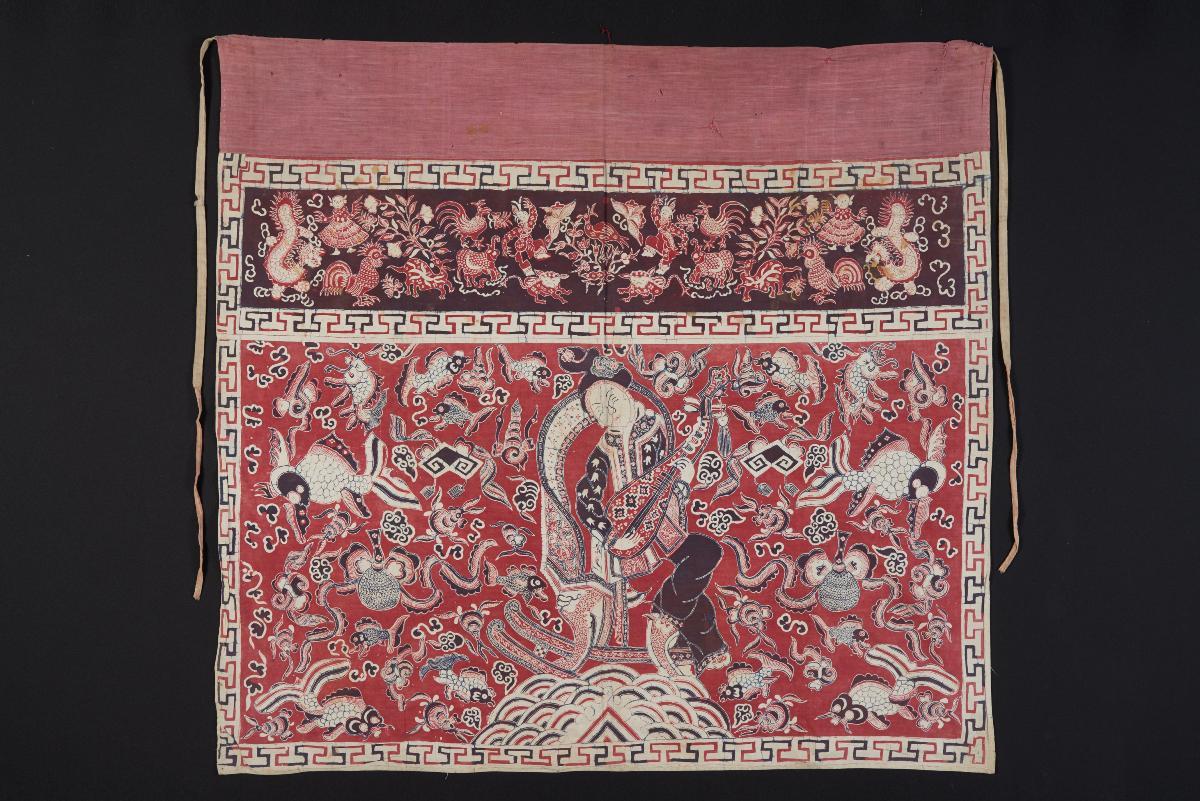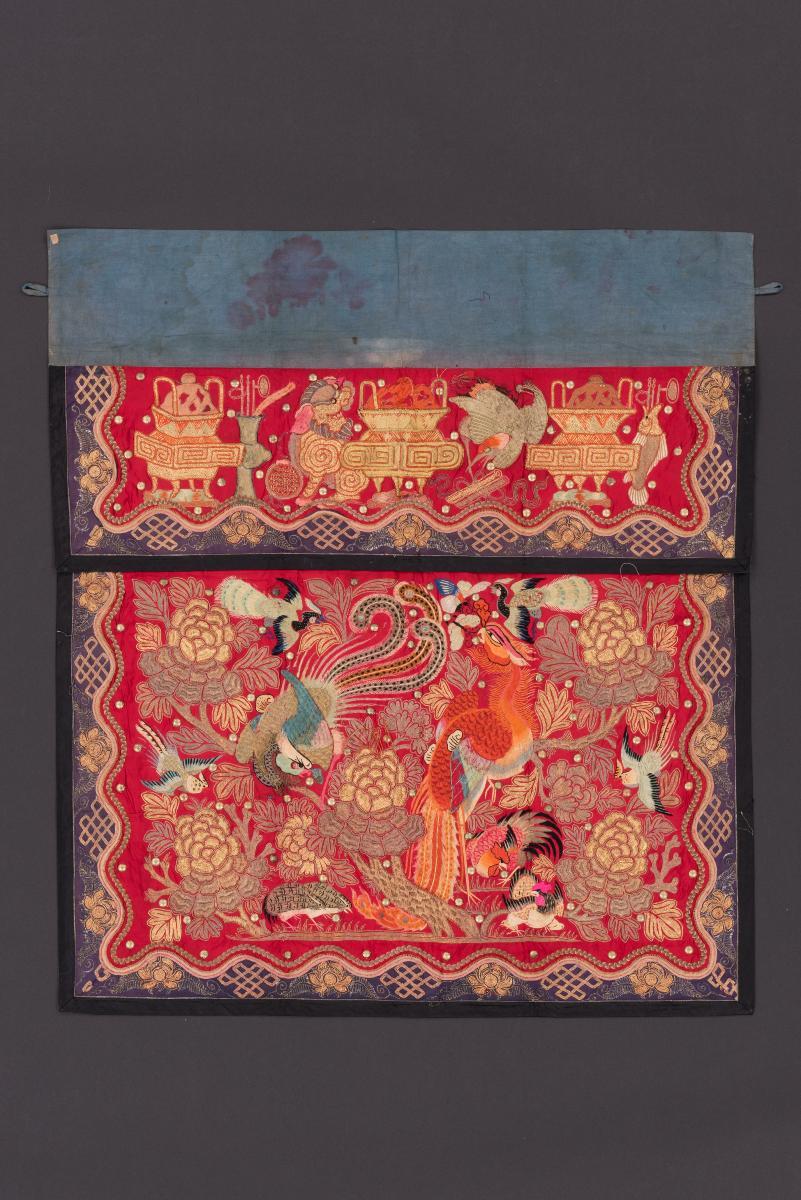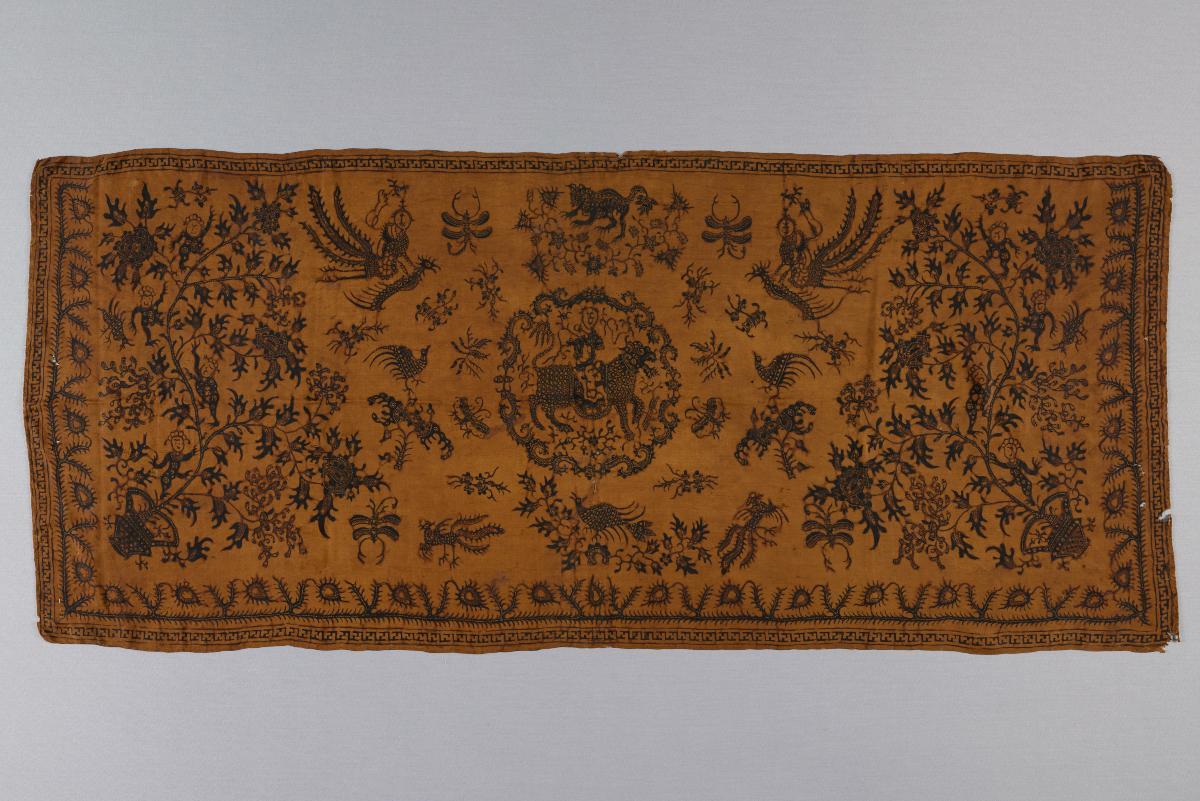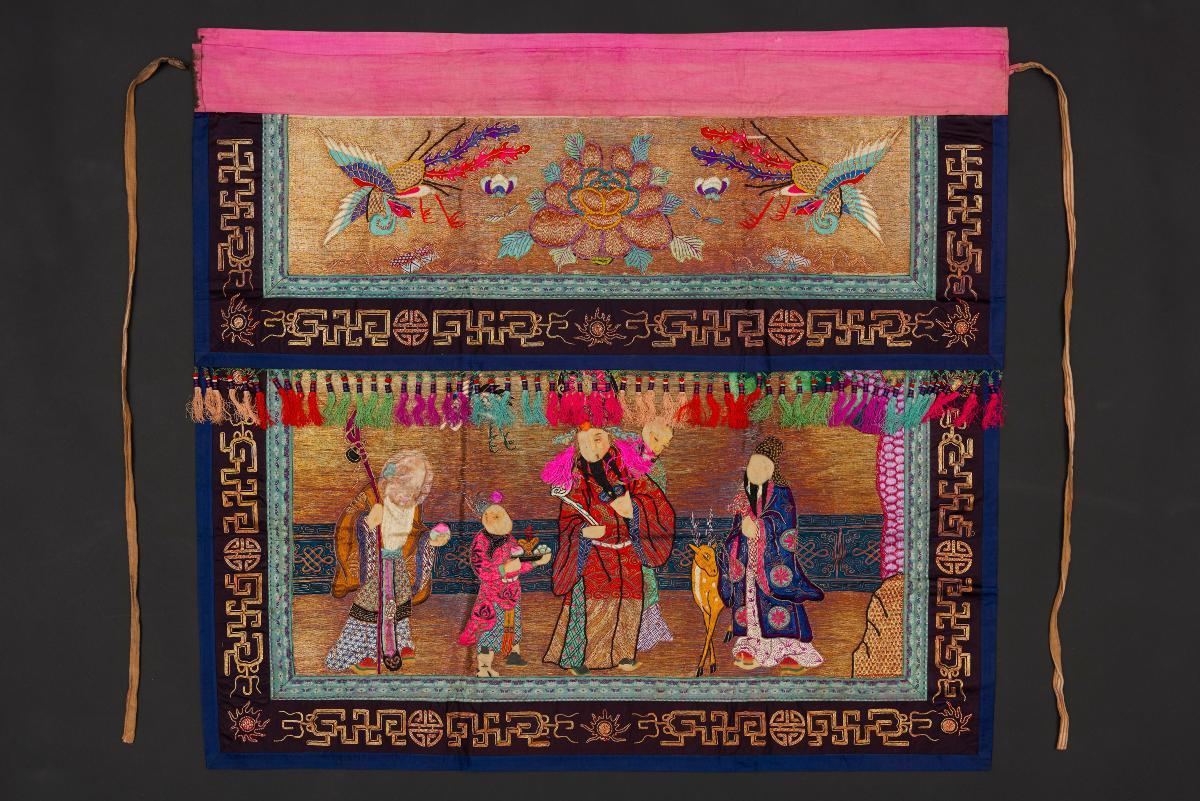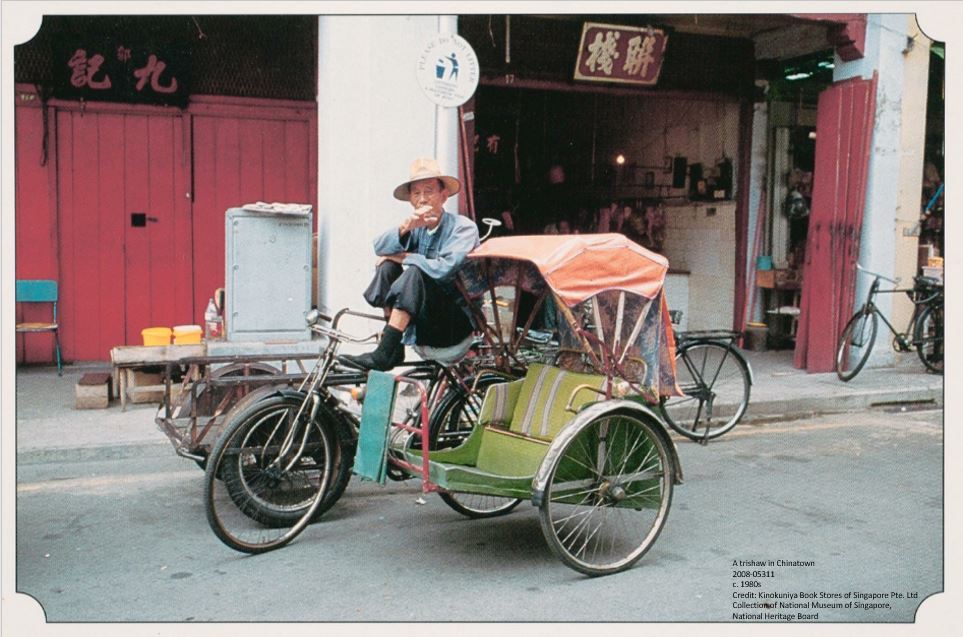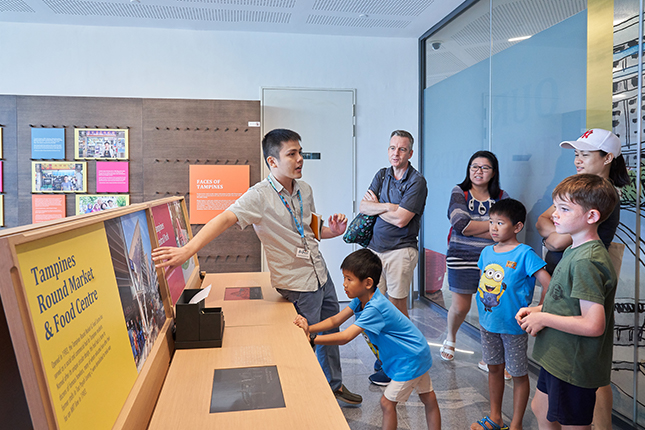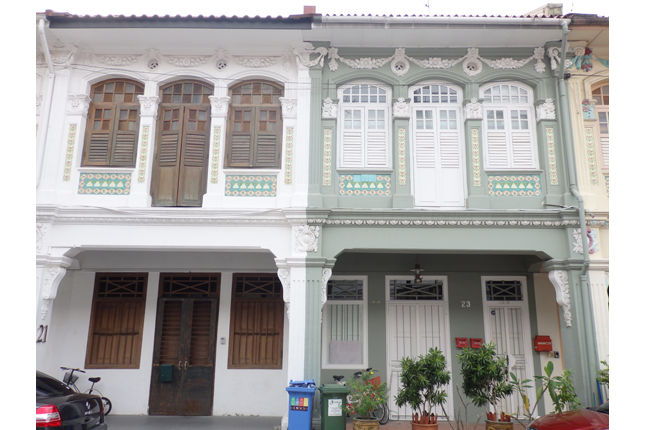The goddess Dewi Cina Bian Cai Tian is shown on the lower panel of this tok wi or altar cloth. This deity is adapted from Fujianese or Cantonese Buddhist folklore, and is shown seated playing the pipa, a Chinese string instrument. Surrounding her are Chinese auspicious symbols, aquatic animals and dancing celestial beings rendered in European style. The two panels are bordered by fretwork, possibly a variant of the banji pattern, believed by the Chinese to contain talismanic properties. This tok wi was likely produced in Cirebon, a northern Javanese coastal town comprising a large population of Chinese. The ‘cloud’ motif (megamendung) in particular, is commonly associated with Cirebon. It is derived from the Chinese auspicious ruyi cloud motif. These cloths decorated the front of altar tables in homes and in some temples. Instead of coloured silks or gold thread couchwork in imported Chinese examples, batik altar cloths were more common in Java.





